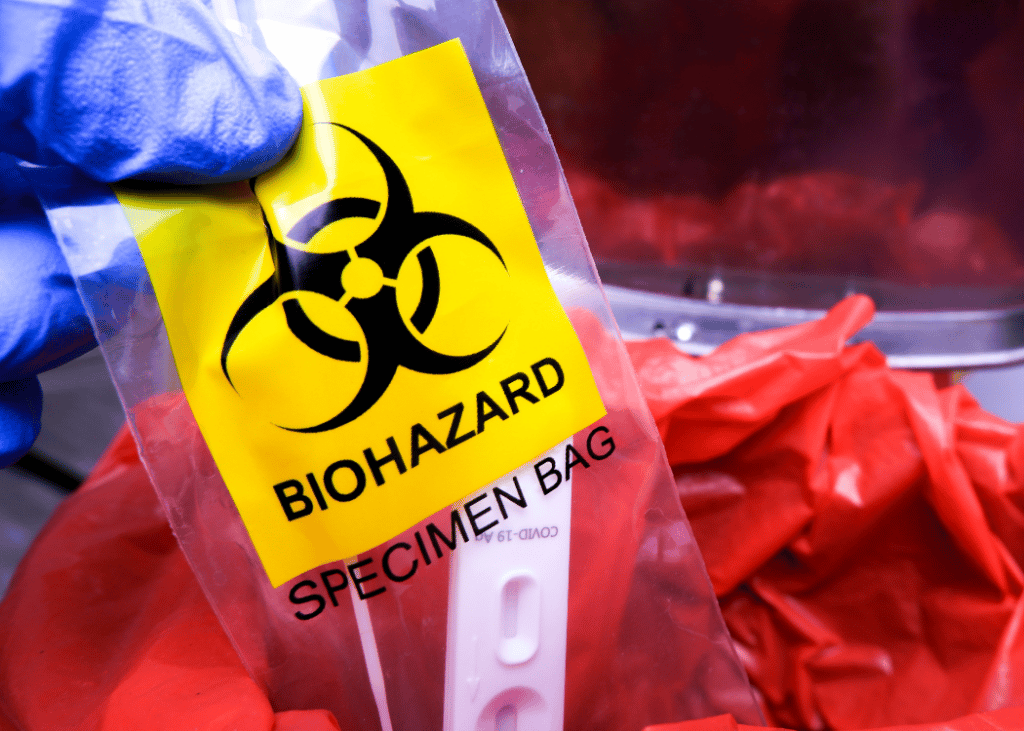Medical Care Hygiene Heroes: The Unsung Duty of Medical Waste Removal Service
Medical Care Hygiene Heroes: The Unsung Duty of Medical Waste Removal Service
Blog Article
Comprehending the Various Kinds Of Waste Disposal Strategies
In the world of waste administration, the variety of disposal methods readily available today is substantial and differed, each method serving a distinctive purpose in addressing the challenge of waste disposal. click here. From recycling approaches that intend to offer new life to products, to the complex procedures of unsafe waste monitoring, the landscape of garbage disposal is intricate yet important for ecological sustainability. Comprehending the nuances of these various methods not only drops light on the significance of responsible waste monitoring yet likewise motivates us to reassess our method in the direction of garbage disposal in a quickly evolving globe

Recycling Techniques
Reusing methods are crucial for lasting waste monitoring methods in both property and commercial settings. medical waste removal. By applying efficient recycling methods, a considerable quantity of waste can be diverted from land fills, saving all-natural resources and decreasing the ecological effect of manufacturing procedures
In houses, curbside recycling programs play an essential role in encouraging homes to separate recyclable products from basic waste. Materials such as paper, plastics, glass, and steels can be arranged and collected for processing into new items, decreasing the demand for resources and energy-intensive production processes.
Industrial facilities also rely upon recycling techniques to reduce waste generation and promote a circular economic climate. By implementing closed-loop systems, organizations can recycle products within their production procedures, lowering expenses and environmental impact. medical waste removal service. In addition, industrial recycling programs usually include collaborations with specialized recycling facilities to make sure that products are correctly arranged, processed, and reintegrated right into the supply chain
Composting Techniques

Aerated static heap composting includes blending organic waste products in a huge heap and regularly transforming it to ensure proper oygenation. This strategy is fit for smaller-scale operations and homes.
In-vessel composting involves putting natural waste in a shut container with controlled conditions for temperature level and oygenation. Windrow composting includes developing long rows of natural waste and frequently turning them to promote disintegration - medical waste removal.
Land Fill Disposal
Land fill disposal is a commonly made use of method for handling waste that can not be recycled or composted. Methane gas, a result of decaying organic waste in landfills, is often collected and used as a source of eco-friendly power. Efforts to decrease dependence on land fills include advertising waste decrease, reusing, and exploring alternate waste disposal approaches to minimize the environmental impact connected with traditional land fill disposal methods.

Waste-to-Energy Incineration
Incineration of waste for energy generation is a technique progressively being thought about as an alternative to typical garbage dump disposal strategies. Waste-to-energy incineration involves the combustion of waste materials at high temperature levels, usually in specialized facilities made to produce electrical energy or warmth through the process - click here. This technique not just lowers the volume of waste that would otherwise be predestined for landfills yet likewise harnesses the warmth produced during incineration to develop energy
Among the crucial benefits of waste-to-energy incineration is its ability to create electrical power while reducing the ecological impact contrasted to traditional garbage dump disposal methods. By transforming waste into power, this approach assists in reducing greenhouse gas exhausts and reliance on nonrenewable fuel sources for energy generation. In addition, waste-to-energy facilities are equipped with advanced air contamination control modern technologies to mitigate prospective environmental toxins released during the combustion process.
Contaminated Materials Administration

Thinking about the crucial significance of responsible waste administration practices, particularly in the realm of ecological sustainability, the focus now shifts towards the elaborate domain of Contaminated materials Administration. Hazardous waste postures significant dangers to both human wellness and the setting, requiring customized handling and disposal techniques. Typical examples of unsafe waste include chemicals, batteries, chemicals, and digital waste.
Hazardous Waste Administration involves the identification, collection, transport, therapy, and disposal of products deemed potentially dangerous or harmful. This procedure requires adherence to stringent laws and guidelines to alleviate unfavorable influence on communities and public wellness. Numerous techniques are used in managing harmful waste, consisting of recycling, safe land fills, encapsulation, and chemical therapy.
Appropriate Dangerous Waste Management is essential for preventing contamination of soil, water sources, and air pollution. It is crucial for industries, labs, healthcare facilities, and other generators of contaminated materials to carry out durable administration methods, training programs, and emergency response prepares to guarantee the risk-free handling and disposal of these materials. Failing to take care of unsafe waste appropriately can have far-ranging effects, emphasizing the significance of persistent and accountable methods in this field.
Verdict
In conclusion, garbage disposal strategies play a crucial duty in managing and decreasing the impact of waste on the atmosphere. From reusing and composting to landfill disposal and waste-to-energy incineration, each approach has its own benefits and restrictions. Appropriate administration of contaminated materials is also vital to shield public health and the atmosphere. It is essential for sectors and individuals to understand the different waste disposal strategies available and pick one of the most ideal approach for sustainable waste monitoring.
In the realm of waste administration, the variety of disposal strategies offered today is large and varied, each method serving an unique function in resolving the difficulty of waste disposal. click here. From recycling methods that aim to offer new life to materials, to the intricate processes of harmful waste management, the landscape of waste disposal is intricate yet critical for ecological sustainability. Understanding the subtleties of these different methods not only loses light on the importance of accountable waste monitoring however likewise prompts us to reassess our approach towards waste disposal in a learn this here now rapidly advancing world
Initiatives to lower dependence on landfills include advertising waste decrease, reusing, and exploring alternate waste disposal techniques to lessen the ecological impact linked with traditional land fill disposal practices.
It is crucial for sectors and individuals to comprehend the various waste disposal techniques available and choose the most proper method for sustainable waste monitoring.
Report this page